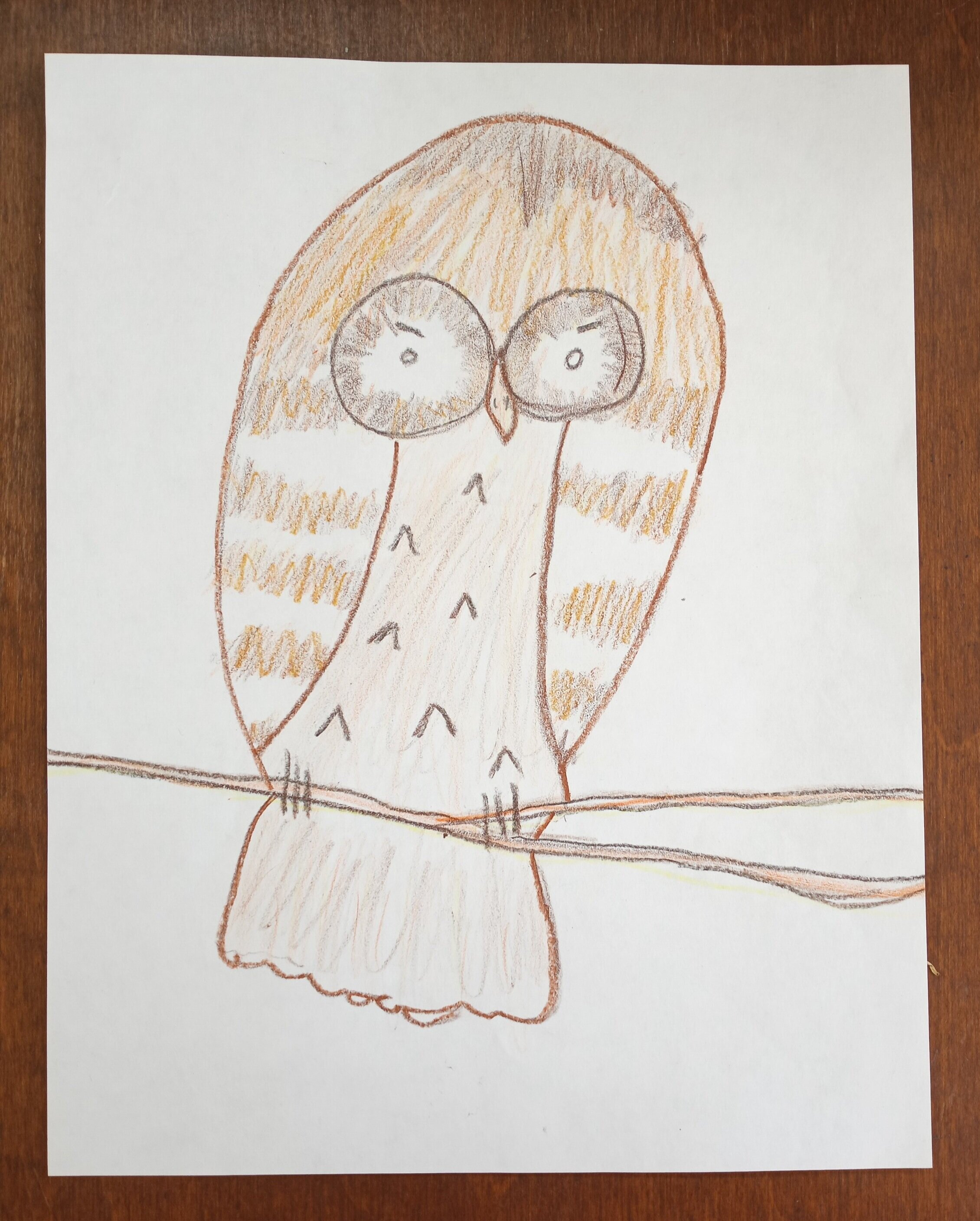Pellets, Pencils and Pages…Whooo’s Studying Owls?
Maybe you!
Here’s a great unit study that you can do with your family or a group, small or large. We’ve done it both ways and it was always a ‘hoot’ – haha. If you’re new to homeschooling and the kids are skeptical about whether it’s going to be like “real” school, this will convince. For maximum “Wow! factor” don’t tell them anything about it until the day you’re going to do it. Trust me on that.
This bird study/dissection intro/art class is geared for K -3rd grade, but can easily go a little higher too, especially if you provide extra reading material or encourage research.
First, order some owl pellets. Pellets? Of poop? No, but the next best gross thing. Owls can’t digest the bones, teeth, feathers or exoskeletons of their prey so they get balled up in their stomachs and then are spit out in pellets.
You can buy them online from places that sell only those, or use a science supply company – we like Carolina Biological Supply. You’re going to want a bone chart too, so either buy a mini kit that includes one or use a free printable like this one. The mini kit also has tweezers and a magnifying glass but you can probably rustle up those on you own. If you’re working with a group, have everyone bring theirs and if someone forgets, sharing is easy.
There are enough interesting things in each pellet for a pair of students, and they’ll love discovering all the icky stuff with a partner, so order accordingly. Large or small? Both. Different owls eat different things so get both sizes. Ideally, I’d say one large and one small or one purchased and one ‘found’ pellet for each pair or trio of kids is best.
Found pellets? Yes, if you’re an adventurous sort of person, and/or one on a really tight budget, you can try finding them in the woods. Although that would spoil the surprise, the ‘wow!’ in finding them would make up for it. Here's a great article that explains the pros and cons and is a must-read if you’re considering going that route.
You can sometimes get them for free from a local zoo or nature center too. We’ve done both. It’s a good opportunity to discuss why the pellets of captive birds may be different than those from wild ones.
While you’re waiting for your pellets, get some general information about owls yourself. Not all Wikipedia articles are created equal, but this one is good – enough to get you one step ahead of the kids. Don’t feel bad skipping the middle section on evolution and systematics – zzz.
Then, get some library books for the kids. Get one or two about owls, and a copy of Owl Moon by Jane Yolen – but unless you’re hunting down your own pellets, don’t let the kids see the library books before you start the study because discovering together is a big part of the fun. It’s not your one chance in a lifetime to learn about owls, so don’t overdo it on books.
Usborne Publishing’s What Shall I Draw? book is a favorite of ours and following its simple steps, every kid can turn out an owl drawing they’ll be proud of, so buy a copy or get that from the library too.
Time to do it! On the day, gather your supplies – mag glass, tweezers, pellets, bone chart copies, books, drawing paper, colored pencils, possibly some glue, maybe a table covering, and if you’re doing it with a group you’ll want a way to draw a big one to demo as you go, so a chalkboard, piece of poster board, etc.
You can either read about owls together or if you are presenting to a group, read highlights and show pictures. A tip for presenting to a group is to get two copies of the book you’re using so that you can enlist another parent to move around and show the pictures up close. Then get out the pellets and dig in. You can glue the little parts you find onto the chart or just compare them to the pictures. Tidy up, wash hands, and get ready to draw.
If you’re using the Usborne book I recommend, just follow the prompts in the book, demonstrating one step at a time. If some kids finish coloring before the others, they should try some of the variations shown in the book. Then tidy up again. You may be tempted to let them finish their pictures while you read, but please don’t.
Owl Moon is an enchanting story, and it’s the kind of book that benefits from full attention. Definitely read it to yourself ahead of time so you’ll get a feel for the tone and be ready to give it the right delivery. A side benefit is that it’s a calming way to end your wonderfully exciting unit study on owls.



